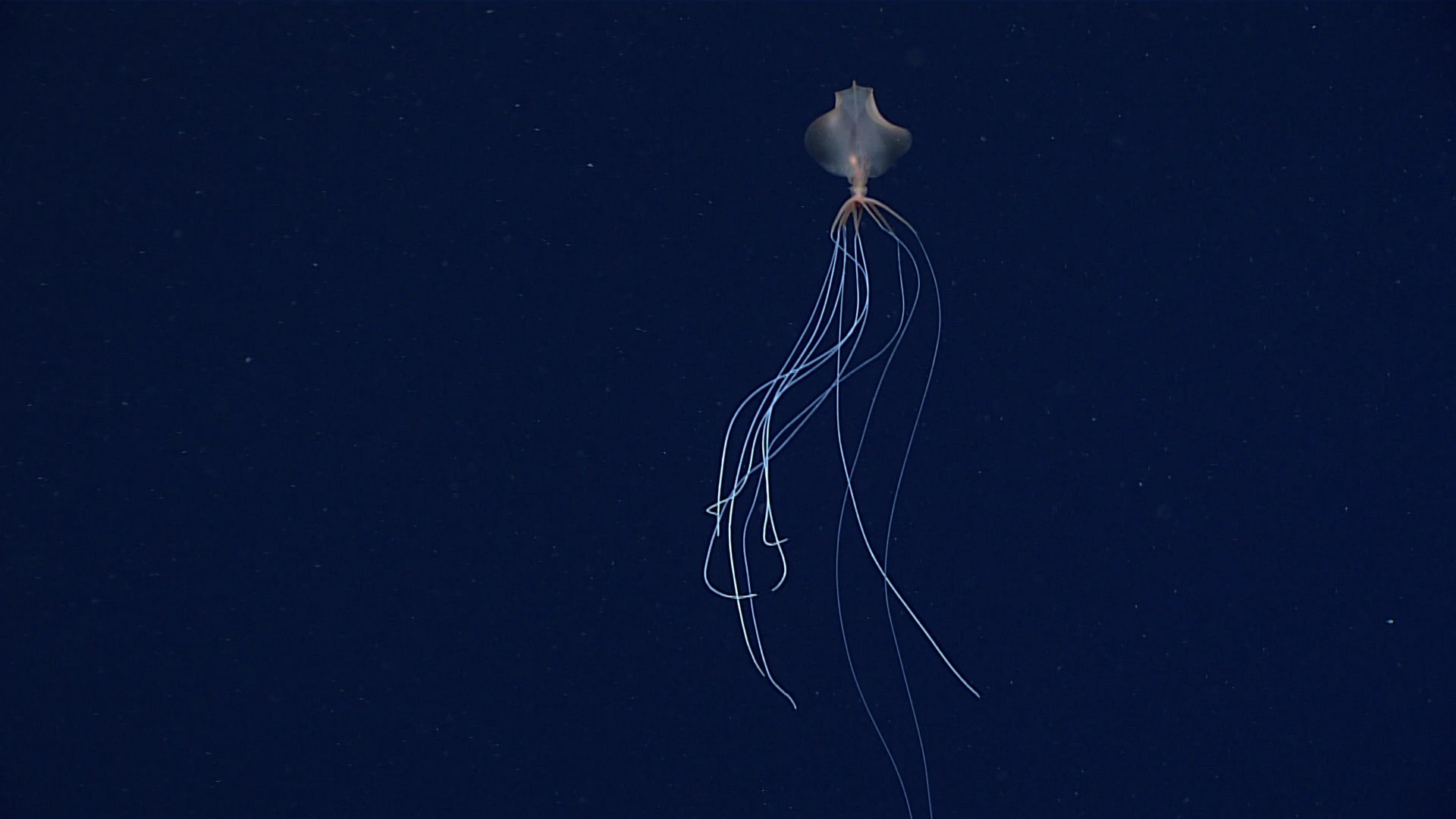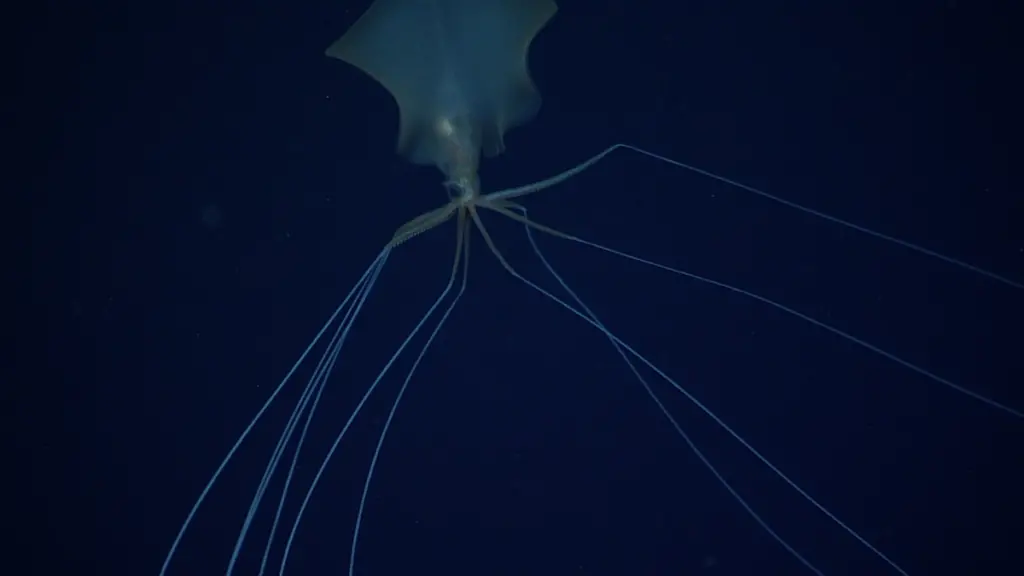What We Know About the Bigfin Squid
Meet one of the most elusive deep sea animals

We know that the deep sea is full of some weird, wild and wonderful creatures. The deep sea’s crushing pressure, freezing cold temperatures and pitch-black darkness isn’t for everyone, but some animals manage to survive and thrive there. Typically, these animals look quite different than their shallower-water counterparts.
For example, look no further than the elusive bigfin squid. There are very few known encounters with these elusive squid—only about 20 recorded sightings in as many years—so there is much we still don’t understand about these strange and haunting animals. One thing we do know for sure? These animals are one-of-a-kind.
Get Ocean Updates in Your Inbox
Sign up with your email and never miss an update.
Dive in to learn more about this unusual cephalopod.
What are bigfin squid?
Bigfin squid are in the genus Magnapinna, which means “great fin” in Latin. They get their name from the fact that their fins stretch to about 90% of the length of the mantle, or the main body of the squid. The largest bigfin squid on record stretched to more than 20 feet long, and it’s possible they can grow even larger. Bigfin squid are the deepest-living squid that we know of—they can live in depths of more than 20,000 feet (6,000 meters).
What’s up with their arms?!
Bigfin squid are instantly recognizable by their big fins (of course) and their long, spindly appendages. Like other squid, they have eight arms and two tentacles, but you can’t tell the two apart in bigfin squid. Instead, all 10 arms and tentacles hang out and down from their bodies, almost like a daddy longlegs spider. Some scientists speculate they use their arms and tentacles as a spiderweb-like net to capture small prey as they swim by. They also suspect that the odd angle of their arms and tentacles (which some have compared to elbows) helps ensure the long appendages don’t get tangles.
How were bigfin squid discovered?
Bigfin squid were only just officially described by scientists in the 1980s, meaning they are relatively “new” in the field. The first specimen was caught in the early 1900s, but the individual was damaged, and scientists couldn’t easily identify it. They eventually said it was a different type of cephalopod called a whip-lash squid. Many decades later, five more specimens were collected in the Atlantic and Pacific, and researchers were able to connect these new samples to the old specimen. Interestingly, these specimens were all juveniles—it wasn’t until the use of undersea remotely-operated vehicles that scientists were able to observe an adult bigfin squid.

Since the first underwater recording of bigfin squid in 1988, there have been multiple additional sightings, including recently on a cruise by the Schmidt Ocean Institute in the Mid-Atlantic Ridge. There are only a few known species, including the Magnapinna atlantica, M. pacifica and M. talismani, but there are likely more.
Bigfin squid are yet another example of the secrets yet to discover in our ocean. We’re only beginning to scratch the surface of discovering all the ways animals can survive and thrive in the ocean depths. It’s up to us to make sure the deep sea—and the rest of the ocean—is healthy to preserve these incredible communities. See how you can take action to protect our ocean from threats like climate change, plastic pollution and more in our Action Center.